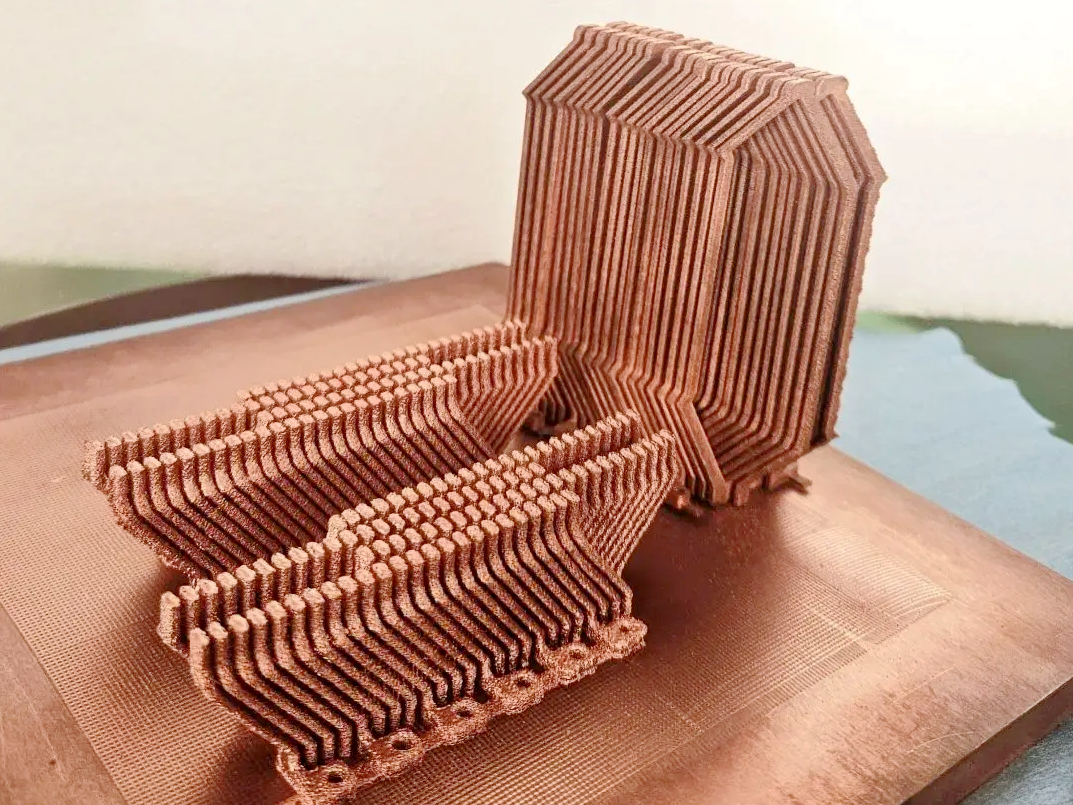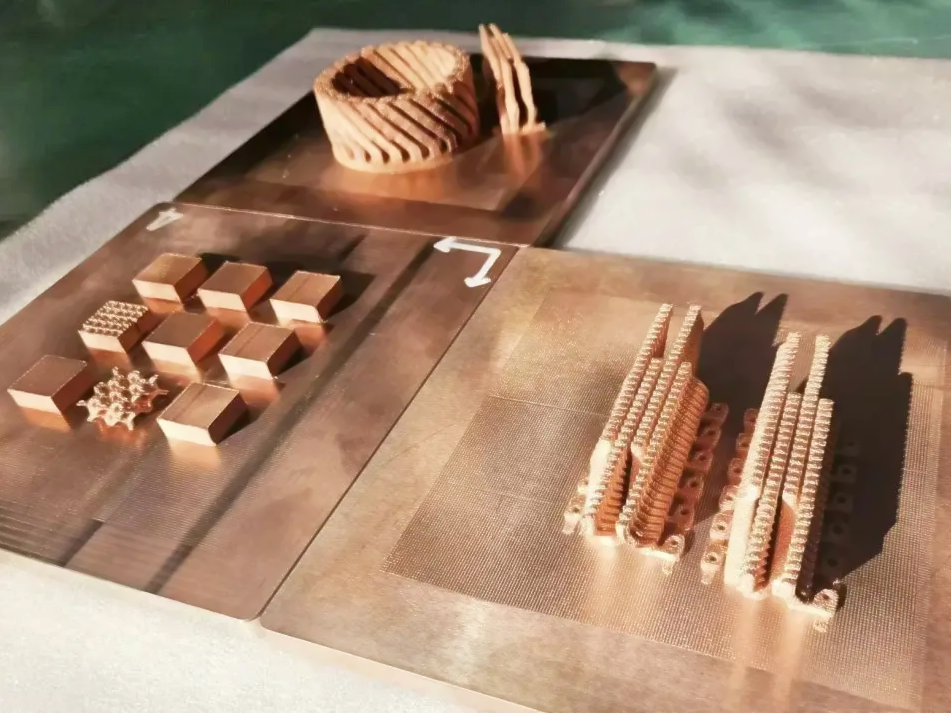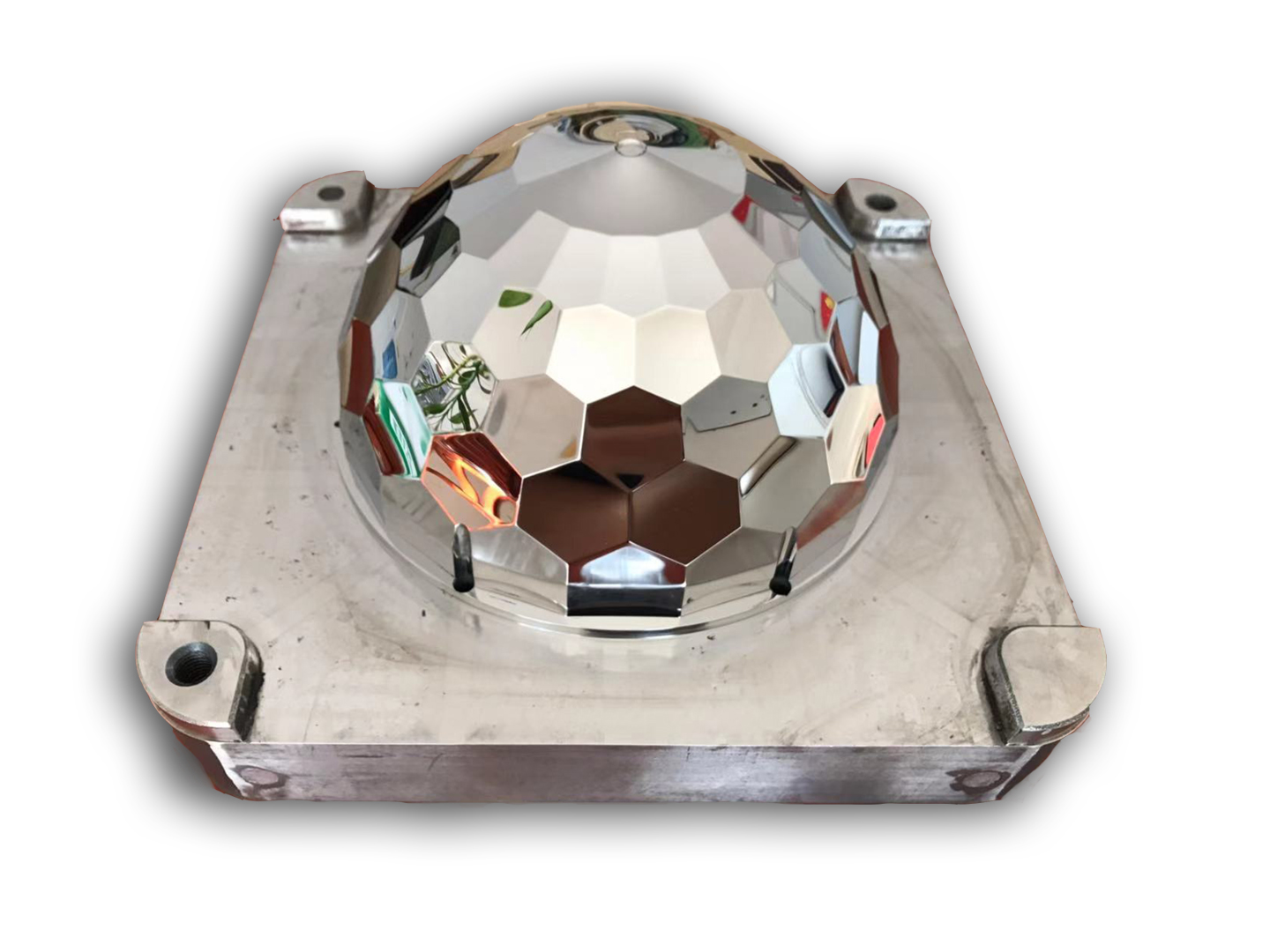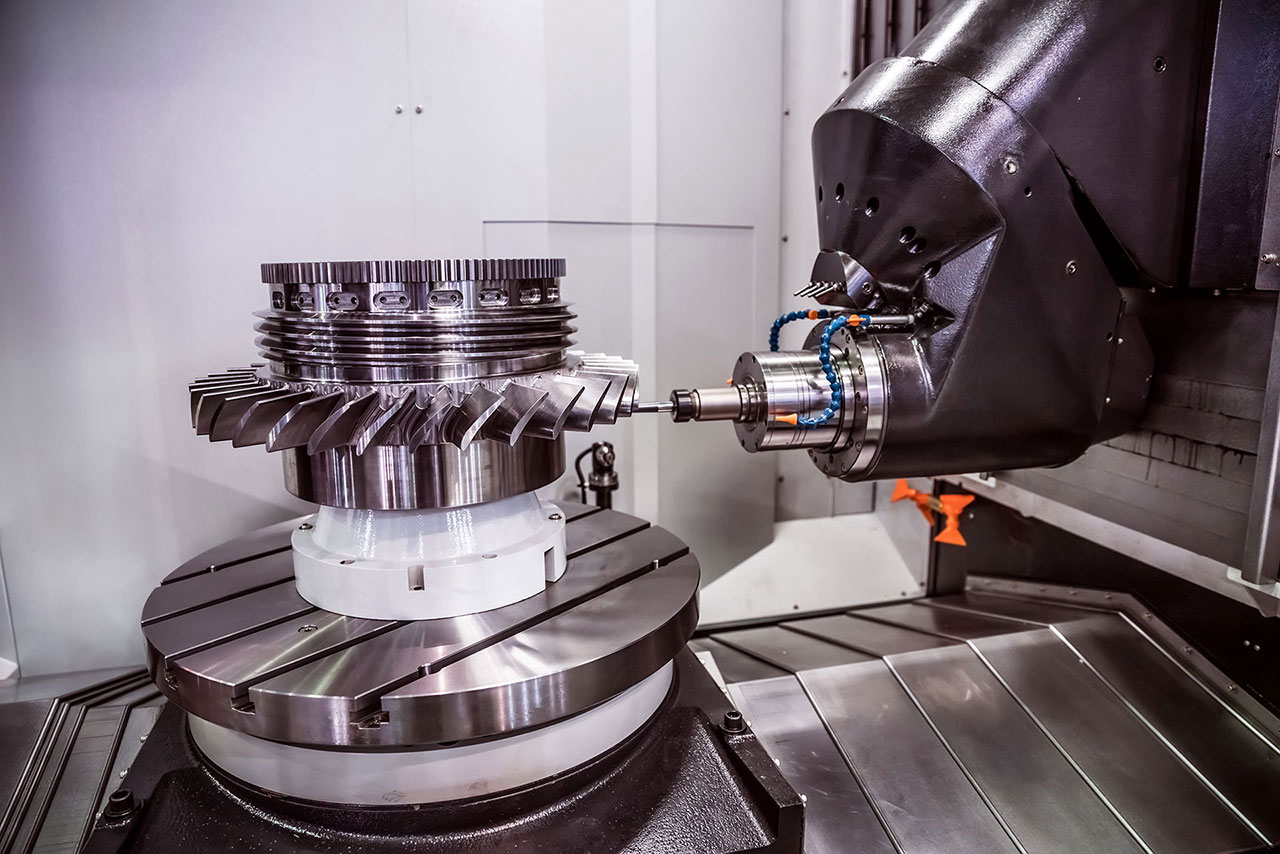What Are The 3D Printing Technologies Used for Copper Parts Additive Manufacturing?
 Copper is a highly valued material due to its excellent electrical conductivity, thermal conductivity, and corrosion resistance. These properties make it ideal for applications in electronics, energy, automotive, and manufacturing industries. Additive manufacturing (AM) technologies enable the production of copper parts with intricate geometries, reducing material waste and offering design flexibility. This blog explores copper parts' primary 3D printing technologies, focusing on materials, applications, and technology-specific benefits.
Copper is a highly valued material due to its excellent electrical conductivity, thermal conductivity, and corrosion resistance. These properties make it ideal for applications in electronics, energy, automotive, and manufacturing industries. Additive manufacturing (AM) technologies enable the production of copper parts with intricate geometries, reducing material waste and offering design flexibility. This blog explores copper parts' primary 3D printing technologies, focusing on materials, applications, and technology-specific benefits.
Direct Metal Laser Sintering (DMLS)
Direct Metal Laser Sintering (DMLS) uses a high-powered laser to sinter copper powder, layer by layer, to form solid parts. This technology is widely used for producing high-density, precise copper parts with excellent mechanical properties.
Materials:
Copper C101: A high-purity copper (99.99%), commonly used for electrical and thermal conductivity applications.
Copper C110: Offers excellent electrical conductivity (about 101% IACS), ideal for electrical connectors, busbars, and other electronic components.
CuCr1Zr: A copper alloy with chromium and zirconium, offering high strength and excellent wear resistance, commonly used in electrical discharge machining (EDM) and high-temperature applications.
Applications:
Electronics: Copper parts for connectors, conductors, and heat exchangers.
Energy: Copper coils and heat exchangers used in energy production systems.
Automotive: Electrical components, including copper coils in motors and batteries.
Benefits:
High Density: DMLS achieves parts with up to 99.9% density, ensuring optimal mechanical performance.
Complex Geometries: Allows to produce intricate internal structures, such as cooling channels and lightweight designs.
Precision: High accuracy and tight tolerances (±0.1 mm), ideal for high-performance applications.
Selective Laser Melting (SLM)
Selective Laser Melting (SLM) is similar to DMLS but uses a higher-powered laser to completely melt the copper powder, creating a fully dense, high-strength part. SLM is ideal for applications requiring strong, durable copper components with superior mechanical properties.
Materials:
Copper C101: Used in applications that require high electrical conductivity (approximately 59 MS/m) and thermal conductivity (398 W/m·K).
Copper C110: A common material for manufacturing parts with excellent conductivity and low resistance.
Applications:
Electronics: Manufacturing high-precision electrical contacts, connectors, and other components requires excellent conductivity.
Automotive: Parts for electric vehicles, such as motors and battery connections.
Energy: Components for energy transmission systems require high thermal and electrical conductivity.
Benefits:
Full Density: Achieves 100% material density, providing high strength and excellent thermal/electrical conductivity.
Precision: Ideal for applications requiring high precision and intricate designs.
Customization: Enables the creation of custom parts tailored to specific requirements in industries like electronics and automotive.
Electron Beam Melting (EBM)
Electron Beam Melting (EBM) uses an electron beam in a vacuum to melt copper powder. This process is beneficial for producing dense, high-performance copper parts in demanding applications, including energy and aerospace industries.
Materials:
Copper C101: Offers high thermal conductivity (398 W/m·K), used in applications requiring efficient heat dissipation.
Copper C110: Known for its excellent electrical conductivity (101% IACS), ideal for creating high-efficiency connectors and electrical components.
Applications:
Aerospace: Components for high-temperature applications, such as heat exchangers and connectors in aerospace systems.
Energy: Heat exchangers and electrical conductors used in energy generation systems.
Medical: Copper implants and medical devices require biocompatibility and high thermal/electrical performance.
Benefits:
Superior Mechanical Properties: Parts produced with EBM have high strength, excellent density, and minimal porosity.
Minimal Porosity: The vacuum environment ensures that the parts are dense, with reduced porosity, enhancing durability.
Efficiency for Low-Volume Production: Ideal for producing high-performance copper parts in low to medium volumes.
Binder Jetting for Copper Parts
Binder Jetting uses a binder to selectively fuse copper powder, which is later sintered to achieve a solid part. This process is ideal for producing copper parts in low to medium volumes, especially when cost-efficiency and speed are priorities.
Materials:
Copper C101: Used in applications where high conductivity and moderate mechanical properties are required.
CuCr1Zr: A copper alloy with excellent strength and wear resistance, suitable for electrical discharge machining and high-temperature applications.
Applications:
Prototyping: Ideal for rapid prototyping of copper parts before moving to final production.
Casting Patterns: Binder Jetting creates molds for copper casting, reducing waste and improving casting efficiency.
Benefits:
Cost-Effective: Binder Jetting offers an affordable solution for producing copper parts and casting molds.
Speed: Rapid production times make it ideal for quick iteration and low-volume production.
Material Efficiency: Minimal material waste during production compared to traditional methods.
Conclusion
The 3D printing technologies used for copper parts, including DMLS, SLM, EBM, and Binder Jetting, offer distinct advantages for various industries, including electronics, automotive, energy, and aerospace. Whether producing high-conductivity connectors with Copper C101 or durable aerospace components with CuCr1Zr, these technologies provide the flexibility and efficiency required for modern copper manufacturing. Manufacturers can optimize production and ensure the highest quality results by selecting the right technology.
FAQs
Which 3D printing technology is best for copper parts in electronics applications?
What copper materials are commonly used in Selective Laser Melting (SLM)?
How does Electron Beam Melting (EBM) benefit copper parts for aerospace applications?
Can Binder Jetting produce copper parts, and what are its advantages?
What is the role of copper alloys in additive manufacturing for automotive components?



